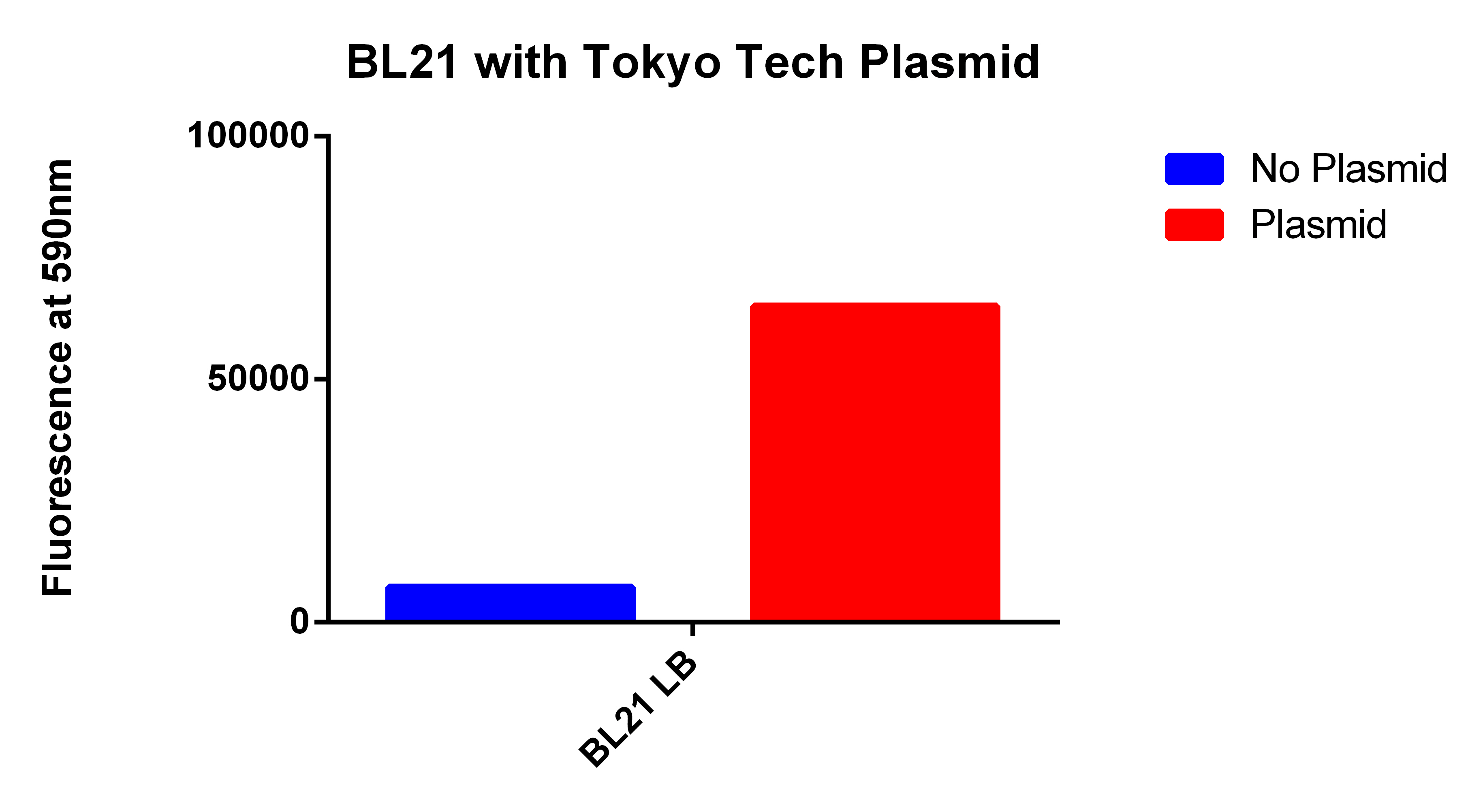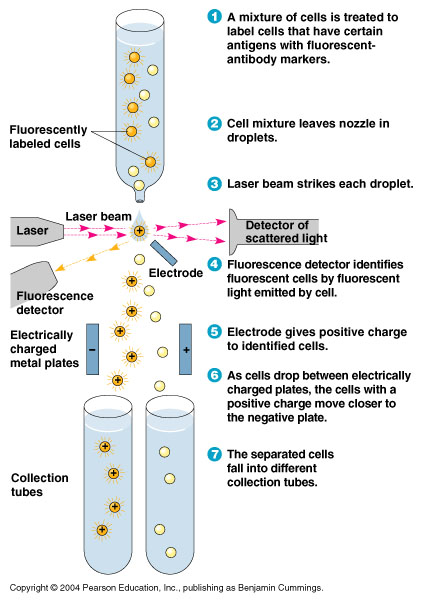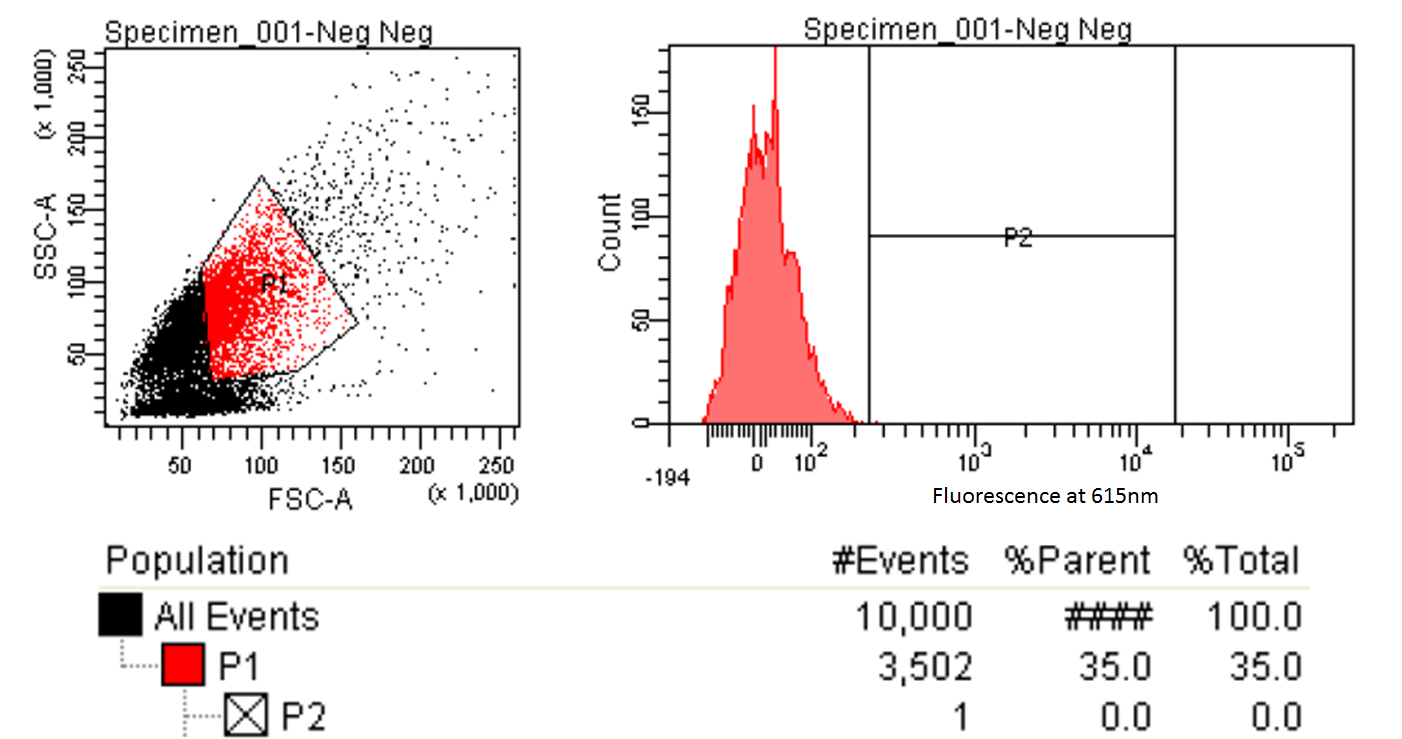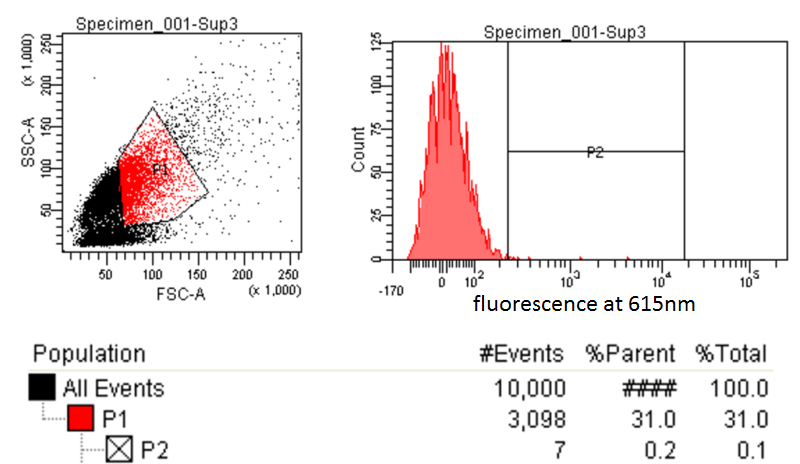Team:Yale/Project Bioassay
From 2013.igem.org
(Difference between revisions)
(→Aims for the Project) |
(→Testing for PLA) |
||
| Line 46: | Line 46: | ||
*Nile red has an emission maximum at 598nm when bound to p(3HB) granules according to Spiekermann et al. 1998 | *Nile red has an emission maximum at 598nm when bound to p(3HB) granules according to Spiekermann et al. 1998 | ||
*Thus we decided to use PE-Texas Red which has an emission maximum at 615nm in order pick the best colonies. | *Thus we decided to use PE-Texas Red which has an emission maximum at 615nm in order pick the best colonies. | ||
| - | + | {| | |
| - | + | |- | |
| + | |style="padding-left: 20px; padding-right: 20px;"|[[File:FACScontrol.png|600px]] | ||
| + | |The left graph shows the distribution of cells entering the FACS. A gate is made to only focus on those which are relatively round and average size (the enclosed red shape). The right graph is the fluorescence of those selected cells. A gate is made and 1/10,000 of the cells are within this gate. Ideally we would want no control cells but this one cells must have been an outlier. | ||
| + | |} | ||
| + | <br><br> | ||
| + | {| | ||
| + | |- | ||
| + | |style="padding-left: 20px; padding-right: 20px;"|[[File:FACSsample.png|600px]] | ||
| + | |This is the experimental sample. The same gate is applied to attempt to sort the desired cells (those with higher levels of Nile red fluorescence) compared to the control. This 7/10,0000 cells can be sorted and a culture was made in a matter of minutes. | ||
| + | |} | ||
Revision as of 04:21, 31 August 2013
| Project Overview | Validate PLA synthesis | Develop bioassay | Apply MAGE | Introduce export system | Make a bioplastic |
|---|
Contents |
Aims for the Project
- Engineer strains of E. coli to validate PLA synthesis
- Develop bioassay to screen PLA production
- Apply MAGE to optimize PLA production, guided by FBA
- Introduce type 1 secretion system to export and extract PLA
- Make a bioplastic
Develop bioassay to screen PLA production
- We needed a way to detect the PLA once we produced it using the heterologous enzymes
- We decided to use the fluorescent dye Nile red, a intercellular lipid strain
- Nile red does not affect the growth of bacteria, and its fluorescence is quenched in water

Positive Control
- We used the 2012 Tokyo Tech Biobrick (BBa_K934001) as a positive control to attempt to detect Nile red fluorescence on our plate reader (ex. 530nm, em. 590nm)
- This plasmid had the enzyme to synthesize P(3HB) a similar plastic PLA
- Cells were grown for 24 hours in the presence of Nile red. The cells were washed and resuspended in PBS.

Our Construct
- We then proceeded to test out plasmid in the plate reader.
- Cells were grown for 24 hours with both enzymes induced and in the presence of Nile red. The cells were washed and resuspended in PBS. The readings were normalized for optical density.

FACS Sorting
- In order to quickly screen the large diversity we planed to create using MAGE, we wanted to employ Fluorescence-activated cell sorting (FACS)
- FACS could sort cells based on the Nile red fluorescence, thus indicating those cells that have produced larger quantities of PLA

Testing for PLA
- Nile red has an emission maximum at 598nm when bound to p(3HB) granules according to Spiekermann et al. 1998
- Thus we decided to use PE-Texas Red which has an emission maximum at 615nm in order pick the best colonies.
 "
"


